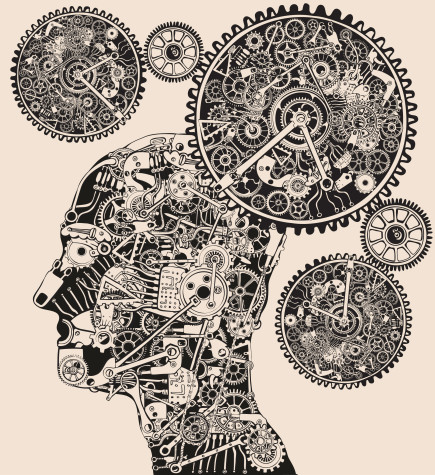
Time is a jail that we’ve built for ourselves, I think as I look at the clock and realize this post is due by some daunting hour of the morning. How could this day have been contained by a big hand and little hand on the face of a clock?
Sometimes, or some places, the clock flies apart. Human footprints 3,000 years old were discovered in Arizona recently during a road project north of Tucson. Archaeologists came upon what had once been a layer of wet clay marked by the tracks of passing adults, children and even a domestic dog. The impressions were left as if they’d just walked through yesterday. An article in the Arizona Daily Star described the find, an archaeologist brushing away sand and dirt, revealing “the impression of a heel, then toes and finally a complete set of human footprints.” The archaeologist who made the discovery said, “The closer I came to the toe I started shaking.”
This is what it feels like to step out of time. We break from cell walls made of seconds, hours, days, centuries and millennia. Somehow we think we’ve got a better grasp on time than the average Stone Age hunter-gatherer whose language likely had no past or future tense. I think otherwise. I believe we lost something. It’s why we start shaking when we make contact with the ancient past. We realize that it’s actually real. Our language and its many tenses has turned the past into an abstraction. We start to believe that because the photos are black and white, history was colorless. Finding a footprint from thousands of years ago, color comes flooding back in.
The footprints were discovered between Interstate 10 and the busy four-lane of Silverbell Road. All around, people bustled, cars racing past, passengers scrambling in daily circles to the office and back, dropping off kids, picking them up.
I grew up in this region, born in one of the densely packed satellites of Phoenix where most people have little concept about the history beneath their feet. In high school, I’d climb the lone desert mountains sticking out of the city like islands. On these juts of rock I found petroglyphs, spirals and the curled horns of bighorn sheep rendered by pecking with a stone or antler. Under the landing pattern of passenger jets, their silver bellies reflecting loops of freeways and interchanges, I found broken pieces of pre-Columbian pottery. Every find made time seem thinner. The sherds of brownish red ware, some painted with truncated designs, turned time into a gauze I could see through. Faces were on the other side, people like me glancing up from their daily chores as they lifted an irrigation civilization from the desert basin of the Salt and Gila rivers.
Several years ago I visited a construction project a couple miles from where I was born. A new light rail station was going in where there used to be a parking lot. When the asphalt was pulled back, hundreds of ancient graves were found below. Pam Cox, one of the archaeologists working on the recovery efforts, sat on the tailgate of a truck. She lit a cigarette and pointed to where a bulldozer was now working. She said that the space being leveled had been the burial of a young woman alongside the remains of a fetus. She said it looked like a miscarriage.
“That’s probably how she died, in childbirth,” Cox said. “They buried her with her unborn son.”
She mentioned excavating a young girl buried by herself. Shell bracelets were stacked up her left arm and all around her was a cache of pots, pendants, carved fetishes, and a necklace made of 185 polished shell beads. They’d taken to calling her “the princess,” not because of any known social hierarchy, but because that’s what you might call a young girl surrounded by so many offerings.
Listening to our conversation, the crew chief came over. He told me that they assigned most of the human remains to Cox.
I asked if she had some special qualification.
“No,” she said, not looking at me.
“Tell him,” the crew chief urged. “Tell him why.”
Cox looked back and considered my face for a moment. She said, “Because I cry the whole time.”
Some people are not contained by time. I believe this was true for this woman. A death a thousand years ago is hardly different than one today.
Maybe it’s all too much to bear, so we make clocks and calendars. We build walls around us to say this is now, that was yesterday, and tomorrow is not here yet. We chop the flow of events into digestible pieces. Sometimes, those pieces blend back together. The time between then and now becomes one time. It is why you sometimes tremble, why you cry. This is what it feels like to be free.
Image: shutterstock
The concept of time fascinates me! Time is a completely human construct yet we follow it like it is a part of nature. Of course the sun rises and falls and the world and its inhabitants gradually age but time is something that we have created in order to make sense of this constant change. I can however not imagine what life would be like without a time structure. I think we would all become completely lost and ill at ease.
A little of both would do us well, I think, some time and some no-time.
Archeology breaks the fourth wall of time. Loved your rumination on the subject. The image that came to me was a traveler coming across the stage and the actors turning to recognize the new presence. Wouldn’t it be fascinating if, by some alchemy, our discoveries today echo in the past?